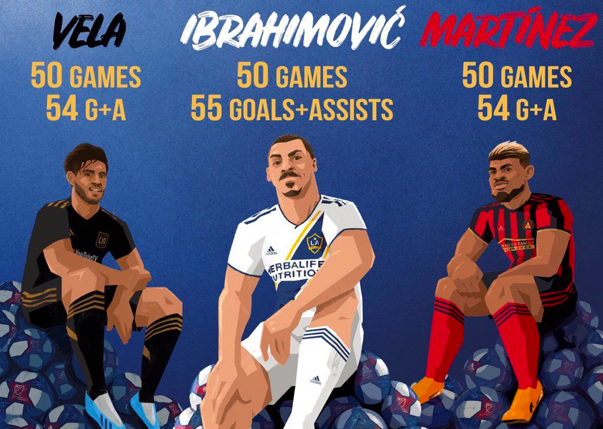The S Stands for Selective: How MLS Invented Modern Football
MLS invented modern football.
While the eyes of Miami have been fixated on the birth of Inter Miami CF and their stadium situation, a growing dialogue regarding promotion and relegation in American soccer is believed to be a fix-all for fans who are disgruntled with Major League Soccer.
Many of the concerns held by fans are valid. The MLS regular season means nothing. In the grand scheme of international football, a MLS Supporter Shield is about as relevant to greatness as Netflix touting the number of accounts that streamed the latest Adam Sandler project its first weekend.
▪️ @JosefMartinez17
▪️ Kacper Przybylko
▪️ @DiegoDv8
▪️ @Pedro32santos
▪️ @MasonToye98🗳️ Vote now for #ATTGotW –> https://t.co/tlUjnBCKHs pic.twitter.com/EexWyrTaM8
— Major League Soccer (@MLS) September 2, 2019
Sure, it sounds impressive. But if winning the UEFA Champions League is the soccer equivalent of Avengers: End Game’s historic global box office, then the prize for the best regular season in MLS is the Bruce Springsteen inspired film Blinded by the Light. Which coincidentally for this argument, Blinded by the Light was directed by Gurinder Chadha of Bend it Like Beckham fame.
Who much like Beckham’s determination to bring professional soccer to Miami, bet the reputation of past work on a faulty concept that historically hasn’t showed great returns.
Beckham and the MLS
With all of that said, the current single-entity business model provides Beckham a protection not afforded to his film-making counterpart. And that truly is what sets MLS apart and why it’s profitable. At this point you may be wondering what the league’s business model has to do with promotion/relegation and overall competitiveness. And the answer is everything.
Earlier this month when St. Louis was awarded an MLS franchise, it paid a reported $200 million to join the league. A payment that is distributed among the other franchises and the league itself. Like with expansion in other sports, the buy-in serves as an investment in the league and reserves that ownership group a franchise in the league for the foreseeable future.
Only six points separate 2-8 in the West. 😲 pic.twitter.com/hLQzAFPWuD
— Major League Soccer (@MLS) September 2, 2019
Where this business model runs into trouble from the fans perspective is when owners believe their team would be better-suited playing in another city, a la Anthony Precourt and the Columbus Crew.
While ownership groups drum up civic enthusiasm as a means to secure public financing for their stadium, the hard truth is that an MLS club is about as representative of a community as your local fast-food franchise. Especially in a league like MLS, where portions of players salaries are still paid by the league and not the team.
Relegation in MLS?
In order to put in place a kind of promotion and relegation system, the league would need to assure owners who have paid cover charges of up to $200 million that their bottom line and fan interest would be protected.
Especially in cities like Miami, New York and LA, that would be exceedingly difficult, given all of the other entertainment options. I would have a hard time imagining a packed stadium in any of those cities to watch a side that has been relegated to Division 2 soccer on a Saturday night. So relegation of any kind appears to be off the table.
It would be one thing if MLS had a buy-in and then was fiscally irresponsible. But it’s conservative approach under Commissioner Don Garber’s administration to stabilize the league in the mid-2000s that has proven to be the key to unlocking a new concept for American soccer: stability.
MLS vs the international market
In a time where the international transfer market ballooned from a million to a billion-dollar business, America’s professional league chose to implement a salary cap when the league began in 1996.
Has this hindered the league’s short-term prospects at times? Definitely. But in an era where the ownership of football clubs internationally seems to be in revolving dollar of billionaires, MLS is growing.
Just this past week, English sides Bury F.C. and Bolton Wanderers both saw their past, present and future potentially go up in smoke. Of the two, only Bolton was able to reach a last-minute sale to avoid being expelled by the English Football League and liquidated. These financial downfalls came after relegation battles lost and ambitious spending to reclaim their former glory came up fruitless.
In an era where we hear more about $100 million transfers than struggling clubs who shutter from spending outside of their means, a conversation about the legitimacy of the salary cap in professional soccer needs to be had.
What MLS can teach international soccer
But is it possible to put a spending cap on the Real Madrid’s and Manchester City’s of the world without it appearing that a league or FIFA is punishing success and affluence?
And how would it be possible for an organization like FIFA to regulate a salary cap when they can’t even control their own internal corruption?
By the same accord, a salary cap league usually only works when owners are buying into a centralized league like the NBA or MLS. This is due largely to the fact that clubs in Europe are their own corporations rather than a subsidiary of a centralized and closed league.
This results in clubs that haven’t bought in, like Miami FC and the New York Cosmos, left out in the cold creating an access problem that trickles down to player development.
So how with all this talk of business strategy and making sure that a league maintains financial stability does MLS make a Sunday afternoon game in April between the New York Red Bulls and the Chicago Fire mean something?
It doesn’t. Because for the owners of the franchises and the executives of the league, they’ve already won before a ball is ever kicked.
By Deny Gallagher



Leave a Reply
Want to join the discussion?Feel free to contribute!